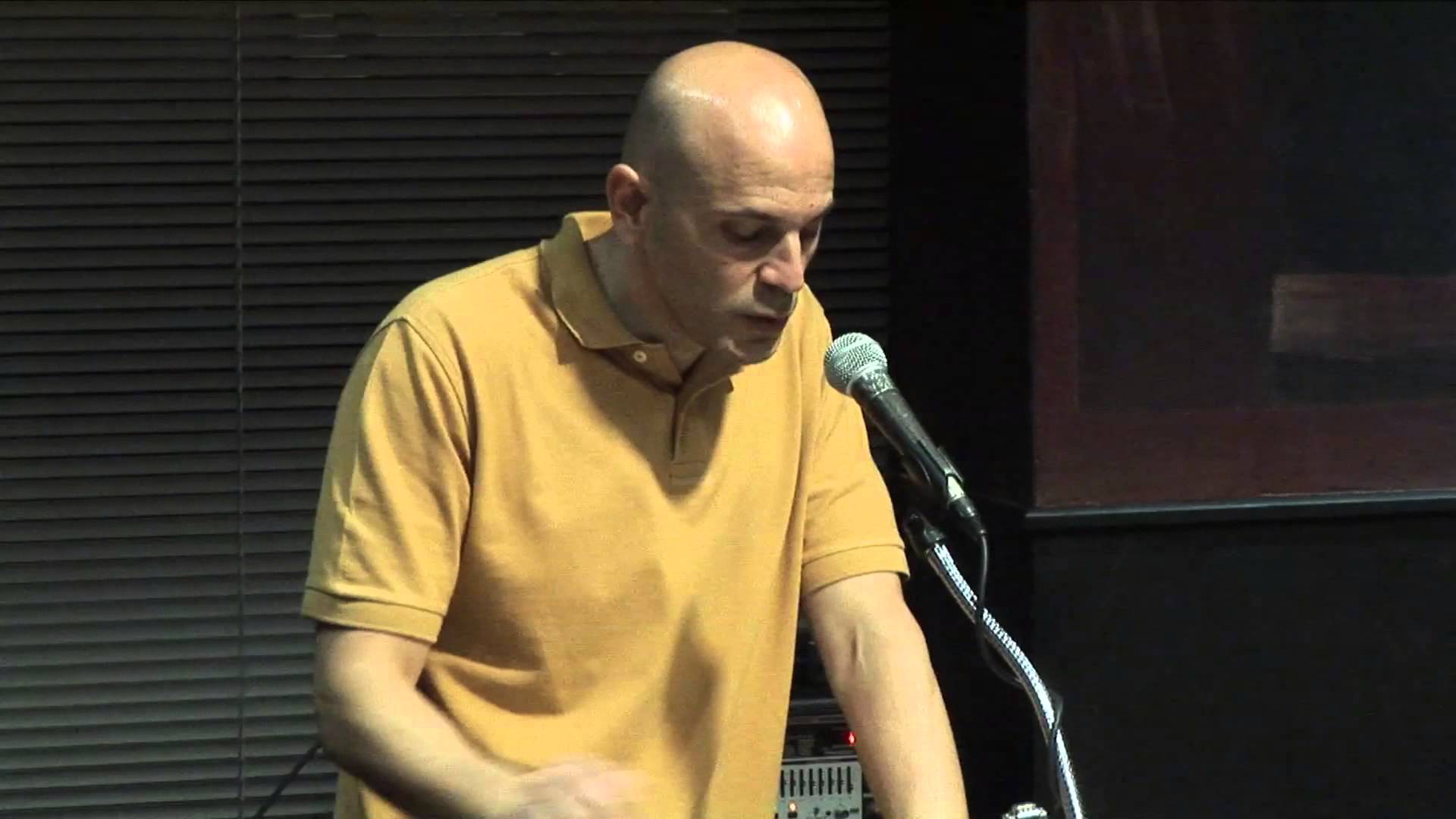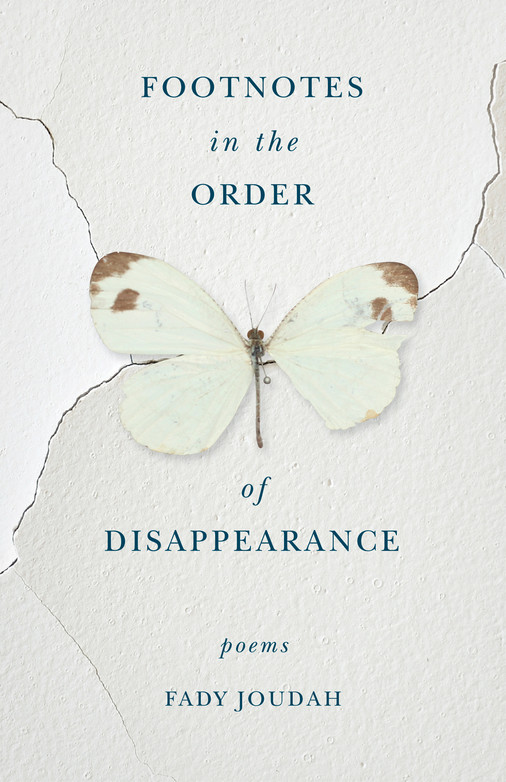A web of living tissue

Footnotes can be the most vibrant, layered and interesting part of a book. If the main part of a text sits enthroned in seamless authority, then the footnotes below are a place for multiplicity and doubt. Just so, there are multiple and sometimes contradictory voices in Fady Joudah's latest collection of poems, Footnotes in the Order of Disappearance (2018).
In "form and diction", the award-winning Palestinian-American poet tells us, the collection is his. But it also brings in different poets, while threading between Arabic and English. There is an entire section, Sagittal Views, crafted in collaboration with Syrian Kurdish poet Golan Haji. And this is not the only joint work in the collection: "Epithalamion" was co-written with poet Deema Shehabi; "Kohl" borrows lines from classical Arabic poetry; and "I Dreamed You" is an adaptation of Joudah's own translation of a poem by Hussein Barghouthi (1954–2002).
All poetry builds on the bones of other poetry, using the salvaged fragments of beloved (or hated) lines. But Joudah's house of footnote-poems draws other poets into the heart of the process. Joudah and Haji make particularly rich conversational partners. Both are acclaimed poets and translators, one from Arabic to English and the other from English to Arabic. Both studied medicine. Both are fearless essayists.
The poems in their co-created Sagittal Views section were, as Joudah notes at the end of the book, written in English entirely by him. But they were "based on our meetings, phone conversations and e-mail correspondence in Arabic." He adds: "The proportion of 'original work' per author varies from poem to poem."
The titular "sagittal view" comes from their shared medical background, referring to a vertical cutaway of an organ, as seen from its left side. The poems, then, show a cross-section of the world, sliced so we can view the detail squirming within.

Connections beneath the skin
The first poem in the section is the evocatively and contradictorily titled, "After No Language". It is animated by both the fairy-tale surrealisms that wind through Haji's works and the sharply carved silences that stand around – and slice through – Joudah's.
The poem begins with, "A silent feeling of an invisible punishment or one seen through cataracts, a sentence that isn't meted out and doesn't end[.]"
From this first line, the reader already has the nightmare feeling that some unseen punishment is coming at us from an unpredictable direction. The sentence is both unsaid and unending, something beneath and beyond language.
Later, a Haji-esque narrative surrealism appears when the narrator reports:
a while back I saw a commercial in black and white for a detergent: its customer was imprisoned in a soap bubble that can't be breached, a second transparent skin he can't exit before the commercial ends; I think it was inspired by a Chinese man who was jailed for life as a child inside an iron ball: as he grew the penalty – the ball grew until it was no longer possible to tell his blood from the ball's rust, and I can't remember what he was punished for
This frightening penance is both foreign (Chinese) and also domestic (an advertisement for detergent). The black-and-white commercial is both verbal and silent, the detergent-man imprisoned in a bubble that can't be breached. The poem ends by telling us "no silence offers answers:" an unfinished sentence, allowing us to escape the bubble into the blankness of the page beyond.
In the collaborative poem "After Wine", two narrators seem to discuss the violence of their shared and overlapping griefs, Palestine and Syria. The poem doesn't specify where the violence takes place, but it is experienced through the tendrils of the Internet: "The hell of pictures on the web. Faces of the dead on Facebook will wait for your walk home. A woman who awakened your lust when you were a kid was killed in the morning while talking to her sister on the phone. First a blast then stillness."
These are not poems of witness that recount events or a poet's reaction to them. Instead, they are about connections beneath the surface of things, with events around the world tied together by a complex web of living tissue. Also from "After Wine": "You couldn't have known she had just died, and what you thought were Klee's paintings in the gallery clawing your afternoon nerves was her calling your name one last time."
When the woman's death happens, it moves through space, clawing at the nerves of a man in a faraway museum. The poem also connects us to an uncle's forbidden love in the northern Syrian town of Amuda, which is echoed two generations later in Damascus. There are more connections than the visible, the poem tells us.
Witness to disappearance
If not "poems of witness", these works are certainly martyrs to a personal despair. Two are both playfully and depressingly titled "I, The Sole Witness To My Despair, Declare." At the end of the first one, the narrator suggests life presents two options: "To go mad among the mad/or go it alone."
In both iterations of "I, The Sole Witness To My Despair, Declare," the narrator responds to an unseen questioner who suggests meditation as a curative. In neither case is the narrator receptive. "If only/reality didn't lay siege to my head/I'd celebrate existence." Indeed, this Zen serenity is impossible when "cruel people gain entry/through the corner of my eye" and anxiety "is a short corridor to the end of things/but the end of things is endless."
The final section is authored by Joudah alone, which suddenly seems like a lonely proposition. But it also has twins, bookended by two, echoing poems called "Footnotes in the Order of Disappearance". The last of these is an extended meditation on moving-between: "when at customs I don't declare/what I brought into my country from that other minor country[.]" The narrator has a fever that goes up and down and is thus defervescing throughout the poem, a beautiful sonic opposite of effervesce.
As the poem comes to its end, the narrator scrolls backwards in time, remembering an interlocutor at age ten, then during toddler years, and finally as baby teeth biting a wrist, a small circle of wounds. The marks remain in place for only a moment before they, like the book's titular footnotes, disappear.
Marcia Lynx Qualey
© Qantara.de 2018
